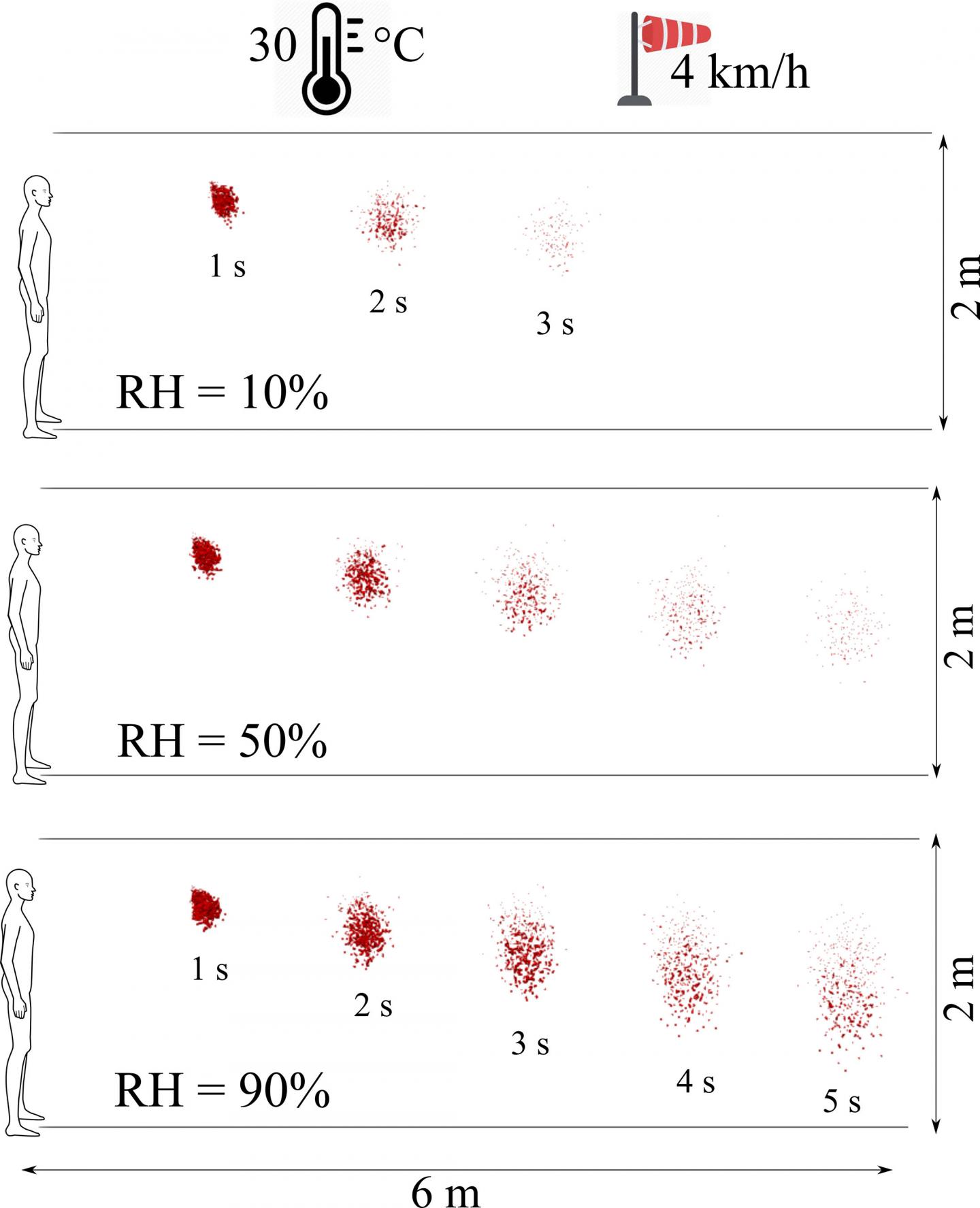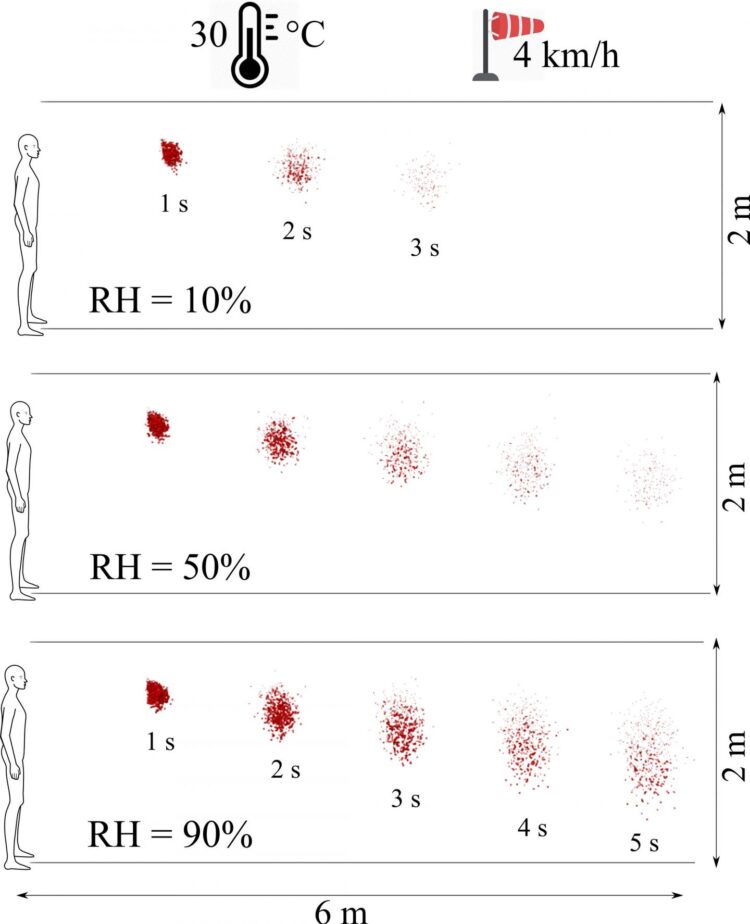Impact of evaporation on virus survival, concentration, transmission

Credit: Talib Dbouk and Dimitris Drikakis
WASHINGTON, September 22, 2020 — As COVID-19 cases continue to rise worldwide, it is increasingly urgent to understand how climate impacts the continued spread of the coronavirus, particularly as winter virus infections are more common and countries in the northern hemisphere will soon see cooler temperatures.
In a paper in Physics of Fluids, by AIP Publishing, researchers studied the effects of relative humidity, environmental temperature, and wind speed on the respiratory cloud and virus viability. They found that a critical factor for the transmission of the infectious particles, which are immersed in respiratory clouds of saliva droplets, is evaporation.
“Suppose we have a better understanding of the evaporation and its relation to climate effects. In that case, we can more accurately predict the virus concentration and better determine its viability or the potential for virus survival,” said Dimitris Drikakis, one of the authors.
Despite the importance of airborne droplet transmission, research regarding heat and mass transfer around and within respiratory droplets containing the virus has been scarce.
To address the challenge, the researchers developed theoretical correlations for the unsteady evaporation of coronavirus-contaminated saliva droplets. They implemented the theory in an advanced computational fluid dynamics platform and studied the effects of weather conditions on airborne virus transmission.
“We found high temperature and low relative humidity lead to high evaporation rates of saliva-contaminated droplets, thus significantly reducing the virus viability,” said co-author Talib Dbouk.
Additionally, the researchers observed the travel distance and concentration of the droplet cloud continued to be significant, even at high temperatures if the relative humidity is high. The wind speed is another crucial factor that might alter all the rules for the social distancing guidelines.
These findings help explain why the pandemic increased during July in different crowded cities around the world, such as Delhi, which experienced both high temperatures and high relative humidity. It also provides a crucial alert for the possibility of a second wave of the pandemic in the coming autumn and winter seasons, where low temperatures and high wind speeds will increase airborne virus survival and transmission.
This study adds to the growing body of research that reinforces the importance of social distancing and the use of face masks to prevent full virus spread. The results reveal the importance of weather conditions in the virus’s viability, which can help guide the design of measures in both indoor and outdoor environments, to reduce airborne virus transmission in private and public spaces.
###
The article, “Weather impact on airborne coronavirus survival,” is authored by Talib Dbouk and Dimitris Drikakis. The article will appear in Physics of Fluids on Sept. 22, 2020 (DOI: 10.1063/5.0024272). After that date, it can be accessed at https:/
ABOUT THE JOURNAL
Physics of Fluids is devoted to the publication of original theoretical, computational, and experimental contributions to the dynamics of gases, liquids, and complex or multiphase fluids. See https:/
Media Contact
Larry Frum
[email protected]
Related Journal Article
http://dx.





